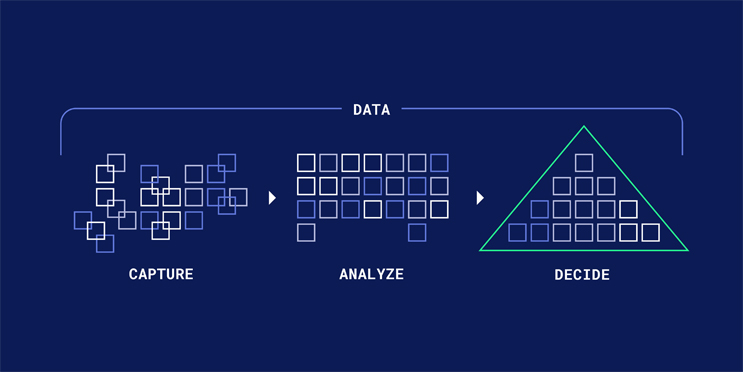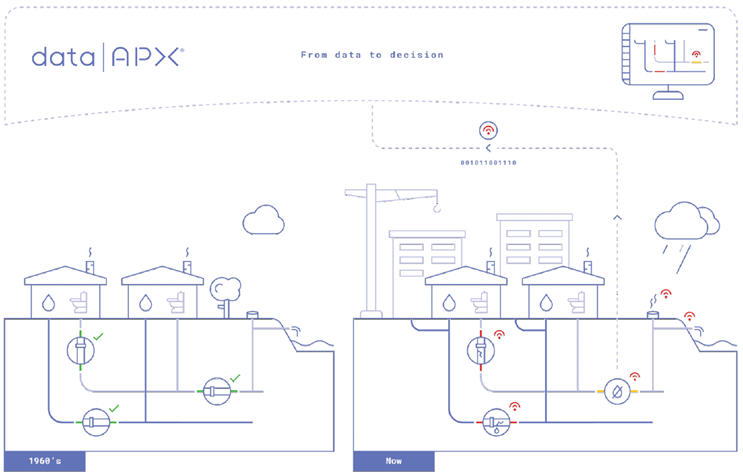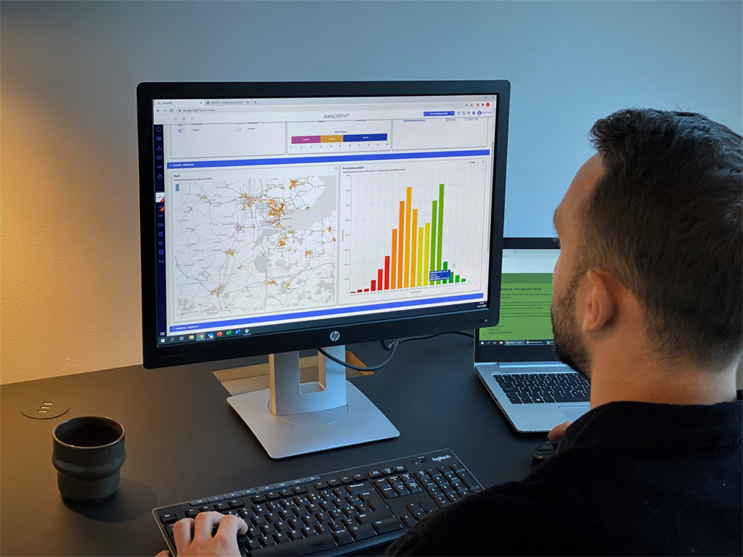Digital Asset Management: Danish Analytics Platforms Offer Solution For U.S. Utilities
By Frederikke Rørvang Mikkelsen
Over the past 25 years, Danish water professionals have taken a proactive approach to digital asset management and data-driven decision-making that peers around the world now can learn from to optimize CAPEX spending, reduce OPEX, and ensure efficient and resilient service.
For water utilities, on average, a water main breaks every two minutes somewhere in the U.S. This means that utilities deal with approximately 250,000 to 300,000 breaks on an annual basis. According to a survey of U.S. wastewater utilities by the American Society of Civil Engineers (ASCE) from the 1990s, an average of 57.5 percent of the system’s assets were reported to be between 21 and 100 years old — which means that they have exceeded the midpoint of their expected useful lives at present.1
Having a reliable water distribution system is not just a necessity for the private households. It also has a great impact on the industrial sector, which is heavily dependent on freshwater resources. As a direct or indirect consequence of future service disruptions, ASCE projects a cumulative decline of $2.9 trillion in gross domestic product by 2039 if the gap between required and actual investments in infrastructure is not addressed.2
The great need for investment in aging infrastructure as well as tight budgets are currently driving municipalities to not only replace network infrastructure but also modernize operation with data analytics in order to leverage smarter, predictive, and cost-effective technologies. Digital asset management and predictive analytics represent two subsectors of the crucial transformation; however, many professionals are unaware of its vast potential. In essence, digital asset management is a process that leverages data to manage long-term planning for the purchase, deployment, and decommissioning of infrastructure assets.
Predictive analytics is a tool used in digital asset management that gathers data through real-time machine learning, modeling, and data mining to interpret and forecast diverse scenarios. These prognostic planning frameworks inform utility decisionmakers about possible challenges and opportunities that may arise as they evaluate lifecycle costing and value engineering.
In Denmark, Data-Driven Decisions Have Increased Utility Efficiency Significantly
Through extensive regulation, the Danish water sector has undergone a tremendous transition to become one of the most efficient and resilient in the world over the last 30 years. Most recently, in 2016, the Danish sector went from simply benchmarking operating costs to a total financial benchmarking model (TOTEX). This approach includes both OPEX and CAPEX in order to also compare the utilities on financial efficiency.
Consequently, a large number of the utilities, with budgets and operations already cut to the bone, had to further reduce their infrastructure investments by at least 1.5 percent per year. Therefore, the need to prioritize and improve investment planning increased the need for asset management.
According to Lasse Thomassen, senior advisor of the Water Advisory at The Trade Council of Denmark in North America, data-driven decision-making has been essential to accomplish the regulatory requirements and prioritize readiness and longer lifespan of the Danish infrastructure investments.
“It is a rule of thumb that up to 70 percent of the utility’s assets are below the surface. Therefore, in order to maintain assets and sustain resilient operations, utilities need to collect data and make data-based decisions. Ultimately, the Danish experience is that digital asset management is not just an economical perk — it is a necessity for modern utilities to stay within regulatory requirements,” Thomassen explains.
Best Practices From Denmark
The Danish utility ARWOS is a great example of how digital asset management and predictive analytics optimize service in the real world. The utility in the southern part of Denmark is experiencing many challenges similar to the reality in the U.S., such as changes in extreme weather events, increasingly poor infrastructure, and constrained budgets.
One of the most pressing concerns at the utility is to limit overflows and infiltration to decrease their OPEX, as the difference from a year with high precipitation compared to a year with low levels of rainfall is approximately USD $1.5 million. However, the cost itself is not the only challenge, as it can be difficult to identify the location. Therefore, as part of the solution, ARWOS has adopted the data-driven platform data|APX®, which supports the utility’s decision-making and prioritization of reinvestment decisions. Through domain-specific analyses, the platform provides an overview of ARWOS assets based on their own existing data and public data.

“Through the data|APX solution alone, we estimate annual savings in operation and maintenance cost in the range of USD $250,000. One major contributor hereof is the identification of rainfall-derived inflow and infiltration water in our sewage system,” Reese says.
He furthermore explains how the complex data is simplified in a three-step process that 1) captures data, 2) analyzes data, and then 3) enhances those data insights so management and operators have proactive, dynamic, and actionable intelligence for precision reinvestment priorities.

Knowledge Sharing Is Essential In The Aftermath Of COVID-19
Since 2014, Danish and U.S. water professionals have been exchanging best practices and technologies in the water and wastewater sector. In Thomassen’s opinion, digital asset management is one of the areas where U.S. utilities truly can benefit from the experiences in the Danish water sector — especially in light of COVID-19.
“It is my experience that U.S. utilities believe digital transformation is the best way to speedily and affordably upgrade their operations — a belief, it seems, accelerated due to the COVID-19 crisis. However, I also see an urgent need for visualization and fact-based decision support to improve the understanding of economy, risk, and prioritization,” Thomassen says.
Ulrich Borup Hansen, CEO and cofounder at APX10, the company behind the solution applied at ARWOS, agrees. He explains that the tool was developed to present a simple and more intuitive approach to asset management among water professionals.

“We found that the many fragmented spreadsheets, personal know-how, and data siloes would benefit from a holistic tool that would allow for better-supported management decisions. Therefore, we actively involve our Nordic water utility leaders in the development of the solution, in order to secure their best practice being built into the solution. Thereby, utility leaders will be able to utilize the utility know-how and experience from Denmark, regardless of their location in the world,” Hansen says.
In a U.S. setting, where budgets are even more constrained than in Denmark, utilities should also take additional comfort because data analytics solutions are straightforward, cost effective, and flexible for incorporation. They do not necessarily require complex reworking, numerous consultations, onboarding, or vast investments to get started. Simply leveraging existing data like CCTV data or other available data streams needed can gain the savings. The tools build upon deep understanding of utility data, which is essential to upgrade performance and ROI significantly, and they can thereby serve a fundamental role in the data-driven transformation of utilities in the U.S.

References:
1. U.S. EPA. “Asset Management for Sewer Collection Systems.” pg. 2.
2. American Society of Civil Engineers. “The Economic Benefits of Investing in Water Infrastructure - How a Failure to Act Would Affect the US Economic Recovery.” pp. 12, 19.
About The Author
 Frederikke Rørvang Mikkelsen is the PR and communications advisor of the Energy and Environment Team at The Trade Council of Denmark in North America. Based in Houston, she primarily supports the activities of the Danish public-private partnership, the Water Technology Alliance (WTA), which aims to share Danish know-how and foster collaboration. Prior to joining The Trade Council, Mikkelsen worked as a communications assistant at the Danish Society of Natural Conservation.
Frederikke Rørvang Mikkelsen is the PR and communications advisor of the Energy and Environment Team at The Trade Council of Denmark in North America. Based in Houston, she primarily supports the activities of the Danish public-private partnership, the Water Technology Alliance (WTA), which aims to share Danish know-how and foster collaboration. Prior to joining The Trade Council, Mikkelsen worked as a communications assistant at the Danish Society of Natural Conservation.
